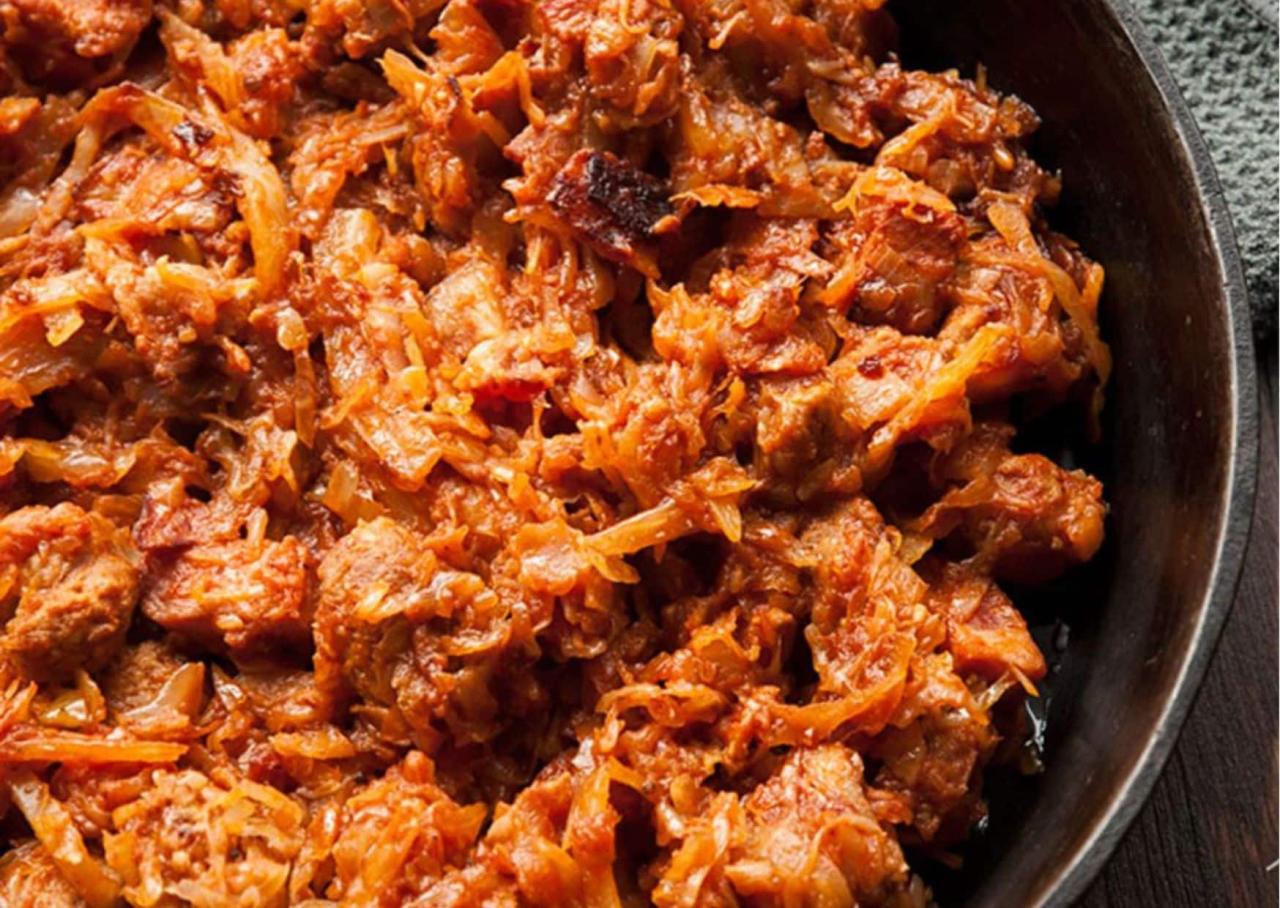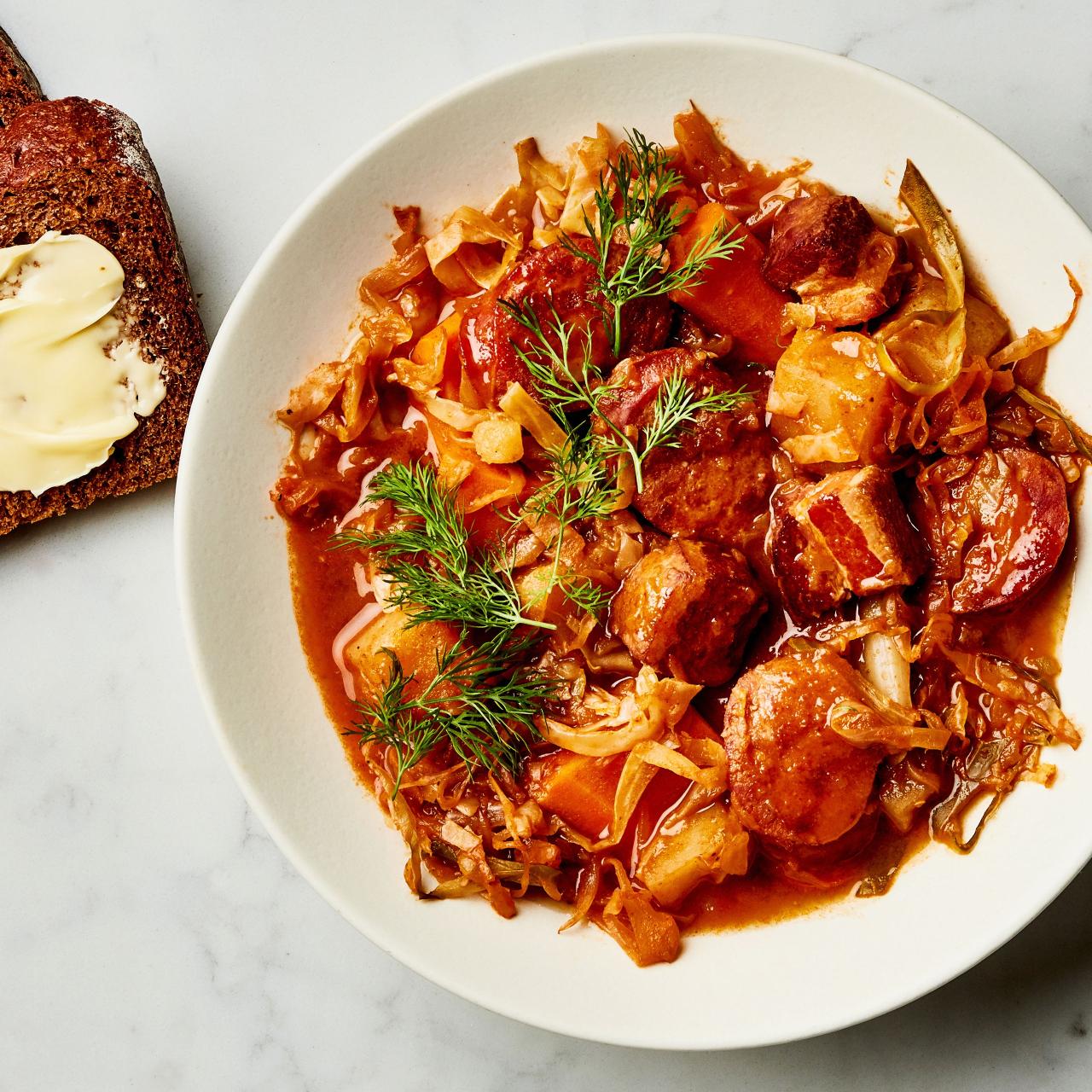On a recent, unforgettable journey through the heart of Poland, I was indulged in the quintessential comfort dish known as Bigos, while a subsequent excursion to the picturesque Swiss town of Bern introduced me to the culinary delight of the Bernese table. Bigos, often hailed as the national dish of Poland, is a hearty stew made of sauerkraut, fresh cabbage, various cuts of meat, and a medley of wild mushrooms, simmered together to create a rich blend of tangy, savory flavors, beautifully complemented by the sweetness of dried plums. The Bernese table, on the other hand, presented an array of flavors from the Swiss region – characterized by its wholesome, rustic fare featuring potatoes, cheese, and meat, prepared with precision and simplicity, exuding warmth and comfort.
Intrigued by these culinary treasures, I embarked on a quest to recreate these dishes, delving into traditional recipes and techniques, adapting them within my kitchen’s confines. After numerous attempts and tasting sessions, I achieved the perfect harmony of flavors that pay homage to their origins. Now, I’m thrilled to share these recipes with you, inviting you to embark on a gastronomic journey that traverses the rich landscapes of Poland and Switzerland, bringing the essence of Bigos and Bernese culinary delights right into your home.

Bigos and Bernese table
Equipment
- 1 oven
Ingredients
- 2 thick slices of smoked bacon
- 400 g of Krakow sausage
- 400 g of boiled beef or pork
- 1/4 Art. flour
- vegetable oil
- 3 large cloves garlic minced
- 1 medium onion
- 2 medium carrots
- 250 g sliced mushrooms
- 500-600 g of finely shredded fresh cabbage
- 400 grams of sauerkraut twice washed
- 1 bay leaf
- 1 tsp dried basil marjoram
- 1 tablespoon sweet paprika
- 1/8 tsp cumin
- Salt and pepper to taste
- 1/4 cup dry red wine
- 5 Art. beef broth
- 2 tablespoons tomato paste
- 2 fresh tomatoes
Instructions
- Pre-heat the oven. Cut the bacon into strips, lightly fry, drain excess fat, add the diced sausage, fry a little more and put in a thick-walled bowl, covered with a lid to keep warm. In the fusion of bacon fat just fry the meat, roll it in flour and add it to the bacon.
- In vegetable oil quickly to fry chopped onion and carrot, tomatoes, add the mushrooms and garlic. All shift in the pan for baking, add fresh cabbage and well-washed and wrung sauerkraut. Put the pan on a medium heat for 5-10 minutes, stirring constantly content. Add bay leaf, basil, marjoram, pepper and cumin in a pan and let stand to heat for 1 minute. Add all remaining ingredients and simmer, stirring constantly, until the liquid boils. Add to the vegetables and bacon meat, tightly close the pan and place in oven for 2.5-3 hours.
- And if you have absolutely no time or desire for a long time to mess around in the kitchen and the table nevertheless it is necessary to cover, you should consider the Swiss version – Bernese table or Berner Platte.
- Bernese table – the specific Swiss cuisine. On a bed of sauerkraut flavored with juniper berries, or boiled green beans with butter laid out all kinds of meats, sausages and different kinds of meats: marinated beef tongue, pork loin, bacon, sausages, sausages – all that is there.
Cooking tips about Bigos and Bernese table

Bigos (Polish Hunter’s Stew):
- Quality of Ingredients: Start with high-quality sauerkraut and fresh cabbage. The better the ingredients, the deeper the flavors in your Bigos. Opt for a mix of meats like pork, beef, and possibly some smoked sausage for layers of flavor.
- Slow Cooking: Bigos is known for its rich, developed taste, which comes from long, slow cooking. Allow your stew to simmer for several hours on low heat, or even better, cook it over two days. The flavors enhance as the stew sits.
- Adjusting Acidity: Depending on the sauerkraut’s acidity, you may need to balance the Bigos with a bit of sugar. Taste as you go and adjust the seasoning to your liking.
- Adding Depth: Dried mushrooms, plums, or apple slices can introduce additional depth and a hint of sweetness to the stew, counterbalancing the tanginess of the sauerkraut.
- Serving: Serve your Bigos hot, ideally with a side of rye bread or potatoes. It’s even more flavorful when reheated, making it an excellent dish for leftovers.
Bernese Table (Swiss Cuisine):
- Simplicity is Key: Swiss cuisine values the quality of the ingredients over complicated cooking techniques. Use the best cheese and meat you can find for an authentic taste experience.
- Rösti Preparation: A quintessential side dish, Rösti should be crispy on the outside and tender inside. Parboil your potatoes beforehand, and consider grating them coarsely for the best texture.
- Cheese Selection: When preparing fondue or servings of cheese, opt for traditional Swiss cheeses like Gruyère or Emmental. The right cheese makes all the difference in achieving the correct flavor.
- Meat Cooking: If meat is part of your dish, remember that simplicity matters. Season well and cook to the recommended doneness without overcomplicating the spices. The quality of the meat will speak for itself.
- Presentation: Keep the presentation simple yet appealing. Swiss dishes often focus more on comfort and flavor rather than intricate plating techniques.
Serving suggestions about Bigos and Bernese table

Bigos (Polish Hunter’s Stew):
- Hearty Bread: Serve Bigos with slices of dense rye bread or pumpernickel, perfect for soaking up the flavorful stew.
- Potatoes: Boiled or mashed potatoes complement Bigos well, offering a simple side that balances the stew’s complexity.
- Pickles and Sauerkraut: Offering a variety of pickles or additional sauerkraut on the side can enhance the tanginess and add a fresh texture contrast to each bite.
- Cold Beer or Red Wine: A cold lager or a glass of hearty red wine such as a Zinfandel pairs beautifully with the savory, meaty flavors of Bigos, cutting through the richness while complementing its depth.
Bernese Table (Swiss Cuisine):
- Rösti: A classic Swiss potato dish, crispy on the outside and tender on the inside, should accompany almost any Bernese dish, serving as the perfect vehicle for capturing flavors.
- Green Salads: A simple green salad dressed with a light vinaigrette can add a refreshing counterpoint to the heartiness of Swiss dishes, cleansing the palate between bites.
- Seasonal Vegetables: Steamed or roasted seasonal vegetables lightly seasoned, provide a healthy and colorful side that harmonizes with the rustic nature of Bernese cuisine.
- Swiss Wines: Switzerland produces exceptional wines that are often overlooked. A crisp white such as a Chasselas or a light red like Pinot Noir can beautifully accompany the textures and flavors of the Bernese table, enhancing the dining experience.
Top 5 FAQs about Bigos and Bernese table

- What are the key ingredients in Bigos? Bigos, also known as Polish Hunter’s Stew, is a hearty dish made from a combination of sauerkraut, fresh cabbage, various cuts of meat (typically pork, beef, and smoked sausage), wild mushrooms, and often dried plums for sweetness. The mix of ingredients can vary, reflecting seasonal preferences or family traditions.
- How long does it take to properly cook Bigos, and why? The magic of Bigos lies in its lengthy cooking process. Traditionally, Bigos is simmered slowly over low heat for several hours, often spread across two days. This extended cooking time allows the flavors to meld together, deepen, and develop a rich, complex taste that characterizes the stew.
- What makes Bernese cuisine distinct from other Swiss regional cuisines? Bernese cuisine is celebrated for its simplicity, wholesomeness, and heartiness. Key features include a reliance on staples like potatoes, cheese, and meat. Dishes such as Rösti (a Swiss potato pancake) highlight the rustic yet comforting approach of Bernese cooking, setting it apart with its focus on quality ingredients and straightforward preparation methods.
- How should Bigos be served for the best taste experience? For an authentic taste experience, serve Bigos hot. It pairs excellently with dense rye bread or boiled potatoes, which complement the stew’s complexity. Bigos is renowned for being even more flavorful when reheated, so it’s excellent as leftovers, allowing its rich tapestry of flavors to further integrate.
- Are there vegetarian options within Bernese cuisine? While traditional Bernese dishes heavily feature meat and dairy, the cuisine’s emphasis on simplicity and seasonal ingredients allows for vegetarian adaptations. Dishes such as cheese-centric fondue or vegetarian Rösti, made without bacon, can provide delicious alternatives for those seeking vegetarian options within Bernese cuisine.
Embarking on the gastronomic journey through the hearty realms of Bigos and the comforting embrace of the Bernese table has been a distinctive and enriching experience. Through the exploration of Bigos, we’ve delved into the depths of Poland’s national dish—a stew rich in history and flavor, blending sauerkraut, meat, and wild mushrooms into a showcase of culinary tradition. This dish’s slow-cooked complexity and layers of tangy, savory notes carry the essence of Polish heritage, providing not just nourishment but a connection to centuries of shared experiences.

Leave a Reply